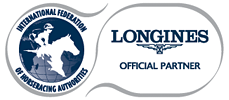Guideline on Laboratory Documentation Package
GUIDELINE ON LABORATORY DOCUMENTATION PACKAGE
- If requested by the horseracing authority, a Laboratory Documentation Package shall be provided by the laboratory that conducted the analysis to support its positive or atypical finding(s). Laboratories are not required to produce a Laboratory Documentation Package for a sample in which no prohibited substance(s) or prohibited method(s) or their metabolite(s) or marker(s) was detected.
- A Laboratory Documentation Package shall comprise the information outlined below to support the analytical results, which shall be the only information that the laboratory is required to provide. Therefore, the laboratory is not compelled to provide any additional documentation, such as standard operating procedures, general quality management documents (e.g., those related to compliance with accreditation requirements), validation data, proficiency testing data, or any other data or documents, in hardcopy or electronic format, not specifically required by this Guideline.
- This Guideline includes recommendations for producing a Laboratory Documentation Package for results from mass-spectrometry-based qualitative identification methods (applicable to non-threshold substances) and quantitative test methods (applicable to threshold substances). For non-mass-spectrometry-based methods, the Laboratory Documentation Package should include relevant analytical data to establish (i) the presence of the reported substance(s) in the test sample, and (ii) for threshold substances, the concentration in excess of the threshold. Deviations from this Guideline shall not invalidate the positive finding(s).
- Formatting requirements:
4.1 cover page clearly showing:
4.1.1. Identity of the testing laboratory
4.1.2. Identity of the regulatory authority (or its representative)
4.1.3. Sample code number (as provided by the regulatory authority)
4.1.4. The corresponding laboratory identification code (if assigned)
4.1.5. A statement signed by the laboratory director or authorised signatory certifying that the Laboratory Documentation Package contains authentic copies of original data, records and forms
4.1.6. A statement specifying that the Laboratory Documentation Package shall be handled as confidential information which shall not be disclosed to outside parties, and shall not be reproduced or forwarded except in full, without written approval of the laboratory and where applicable the regulatory authority.
4.2. Sequentially numbered pages, and information on the total number of pages
4.3. A table of contents
4.4. Presentation in a format that will allow proper review by relevant stakeholders, such as clearly scanned documents, descriptors, etc. Annotations may be included by the laboratory to assist interpretation.
4.5. Information that appears on the data and forms that refer to other samples may be redacted by the laboratory.
4.6. Data, charts, graphs, etc. shall be clearly described and presented. Descriptions may be provided in the Table of Contents, page headers, titles, etc.
- Laboratory Documentation Packages should contain:
5.1 Chain of Custody
5.1.1 List of laboratory staff involved in the test(s), including position titles, signatures, and/or initial
5.1.2 The sample’s external and internal chain of custody information, including the date of sample receipt and a declaration of the condition and integrity of the sample upon receipt
5.1.3. Information clearly linking the sample code number to the laboratory identification code (if available);
5.2 Analytical data
5.2.1. Qualitative confirmatory analysis data (the laboratory is not required to quantify or report the concentration of an analyte for a non-threshold substance):
5.2.1.1. method code (or SOP code) of the analytical method applied and a general description of the method, including either a statement that there were no deviations from the documented procedures or an explanation of the existence of acceptable deviation(s);
5.2.1.2. instrument type, including a statement of acceptable performance from instrument check or QC data;
5.2.1.3. description of each positive and negative quality control sample(s) analysed in the same batch;
5.2.1.4. the monitored ions or transitions of the method for identifying the reported substance(s);
5.2.1.5. the exact instrument analysis sequence;
5.2.1.6. relevant chromatographic and mass spectrometric data (presented in the injection order, each with the date and time of injection) for the following as a minimum:
• negative quality control sample(s);
• sample aliquot(s), analysed immediately after a negative quality control sample or system blank;
• positive quality control(s) and/or reference standard(s), analysed normally immediately after a system blank or negative quality control sample;
5.2.1.7. identification data, demonstrating compliance with the AORC Guidelines for the Minimum Criteria for Identification by Chromatography and Mass Spectrometry, including:
• a summary table showing the relative abundances and retention time data of the diagnostic ions for the sample aliquot(s) and the reference sample(s);
• the applicable criteria and calculations used to identify the reported substance(s);
• statement or confirmation that the results meet the applicable criteria;
5.2.1.8. a clear conclusion.
5.2.2. A summary of quantitative analysis data (for threshold substance(s) only), including such necessary data as:
5.2.2.1. calibration curve(s);
5.2.2.2. individual and average concentrations or other parameters (in appropriate units) determined for both the test sample and quality control(s);
5.2.2.3. nominal concentration(s) and acceptance criteria for the positive quality control(s);
5.2.2.4. the applicable uncertainty of the measurement
5.3. Copy of the laboratory test report(s) or analysis certificate(s)
5.3.1. A copy of each original test report (or analysis certificate), which shall include the following:
5.3.1.1. title (e.g. Test Report), the unique test report number, identification on each page to ensure it is recognized as part of the report, and a clear identification of the end of the report
5.3.1.2. date when the report is issued
5.3.1.3. identity and address of the testing laboratory
5.3.1.4. identity and address of the regulatory authority (or its representative)
5.3.1.5. identification of the method(s) used
5.3.1.6. description/type of the sample(s), and unambiguous identification or code number of each sample tested
5.3.1.7. corresponding laboratory code number(s) if assigned
5.3.1.8. the date of sample receipt and/or the date when analysis of the sample(s) began
5.3.1.9. test result(s)
5.3.1.10. the name, title/function, and signature of the analyst responsible for the test result(s), and those of the management representative that authorised the report
5.3.1.11. in the case of a threshold substance, the concentration determined, the estimated uncertainty of measurement, and a statement that the threshold has been exceeded
5.3.1.12. a statement to the effect that the test result(s) relate only to the sample(s) tested.
E. Houghton
Chair, Advisory Council on Equine Prohibited Substances and Practices
11.09.2017



